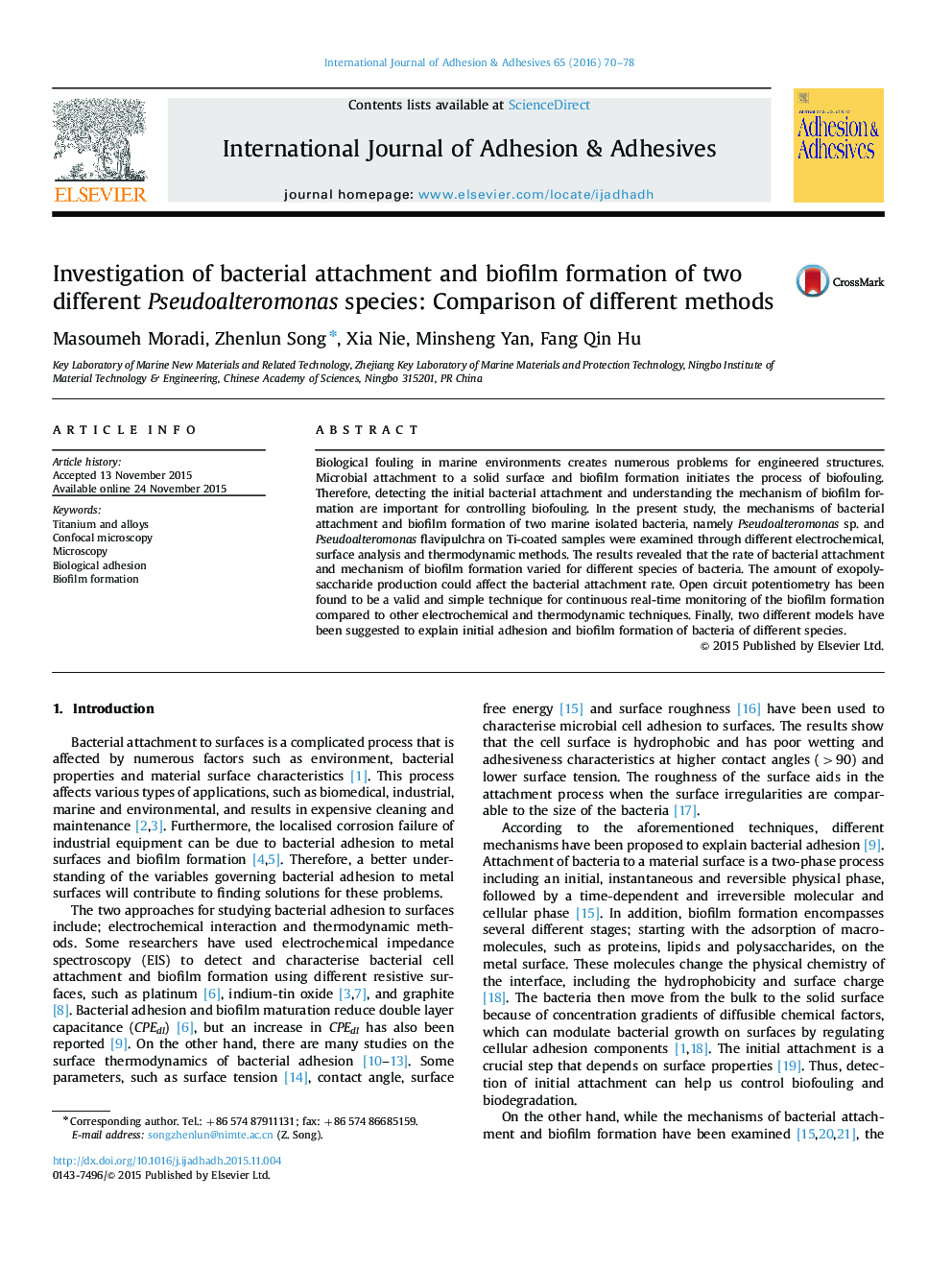| Article ID | Journal | Published Year | Pages | File Type |
|---|---|---|---|---|
| 779868 | International Journal of Adhesion and Adhesives | 2016 | 9 Pages |
Biological fouling in marine environments creates numerous problems for engineered structures. Microbial attachment to a solid surface and biofilm formation initiates the process of biofouling. Therefore, detecting the initial bacterial attachment and understanding the mechanism of biofilm formation are important for controlling biofouling. In the present study, the mechanisms of bacterial attachment and biofilm formation of two marine isolated bacteria, namely Pseudoalteromonas sp. and Pseudoalteromonas flavipulchra on Ti-coated samples were examined through different electrochemical, surface analysis and thermodynamic methods. The results revealed that the rate of bacterial attachment and mechanism of biofilm formation varied for different species of bacteria. The amount of exopolysaccharide production could affect the bacterial attachment rate. Open circuit potentiometry has been found to be a valid and simple technique for continuous real-time monitoring of the biofilm formation compared to other electrochemical and thermodynamic techniques. Finally, two different models have been suggested to explain initial adhesion and biofilm formation of bacteria of different species.
